In recent years, the air fryer has emerged as a game-changer in the kitchen appliances market, offering a healthier alternative to traditional deep-frying. As this trend continues to gain momentum, understanding the dynamics of the market, the role of key players, and the future outlook becomes crucial for suppliers and consumers alike. This article delves into the intricacies of the air fryer industry, exploring the factors that drive sales, the benefits of partnering with an Amazon FBA supplier, the importance of quality and innovation, navigating regulations, case studies of successful suppliers, the challenges and opportunities in the supply chain, and future trends and predictions.
The Rise of Air Fryers in the Western Market
The surge in popularity of air fryers in the Western market has been nothing short of meteoric. Once a niche product in the culinary gadget sector, these compact appliances have now become a staple in countless kitchens across the United States, Canada, the United Kingdom, and beyond. The reasons behind this sudden rise are multifaceted, encompassing everything from health-conscious consumer trends to the convenience they offer to busy lifestyles.
Health has always been at the forefront of the air fryer’s appeal. As people become increasingly aware of the negative health impacts of traditional frying methods, the allure of air frying’s ability to create crispy, flavorful dishes with a fraction of the oil has been hard to resist. This healthier cooking alternative has struck a chord with those looking to maintain a balanced diet without compromising on taste, leading to a significant uptick in air fryer sales.
Moreover, the convenience factor cannot be overlooked. With the relentless pace of modern life, consumers are always on the lookout for ways to simplify their meal prep. Air fryers provide a quick and easy solution for cooking a wide variety of foods, from chicken wings to vegetables, with minimal cleanup. The compact size and ease of use have made them a must-have for individuals and families alike.
Another contributing factor to the air fryer’s ascent in the Western market is the influence of food culture. Chefs and culinary influencers have embraced the technology, often showcasing their creative recipes that utilize air fryers. As these individuals share their love for the appliance on social media and in cooking shows, the air fryer has gained a cult-like following.
In terms of demographics, the trend is particularly pronounced among younger consumers who are more likely to be tech-savvy and open to trying new cooking gadgets. They appreciate the air fryer’s sleek design and the myriad of recipes it can accommodate, making it a must-have for anyone interested in exploring different culinary adventures.
The Western market has also seen the emergence of numerous brands and models, each vying for a share of the burgeoning air fryer market. This competition has led to a proliferation of innovative features, such as programmable settings, adjustable temperature controls, and even air fryer/oven combinations. Consumers are spoilt for choice, and this diversity has further fueled the demand for air fryers.
From a global perspective, the air fryer’s success in the Western market has not gone unnoticed. Other regions are taking notice and adopting the trend at a rapid pace. As the world becomes more connected, the popularity of the air fryer is poised to spread even further, with new markets eagerly embracing the appliance as a convenient and healthy addition to their kitchen arsenal.
The air fryer’s rise in the Western market is a testament to the power of innovation and consumer demand. It’s a story of how a simple kitchen appliance can revolutionize the way we cook, one crispy chicken wing at a time. And with no signs of slowing down, it’s clear that the air fryer’s future in the Western market is as bright and hot as the food it prepares.
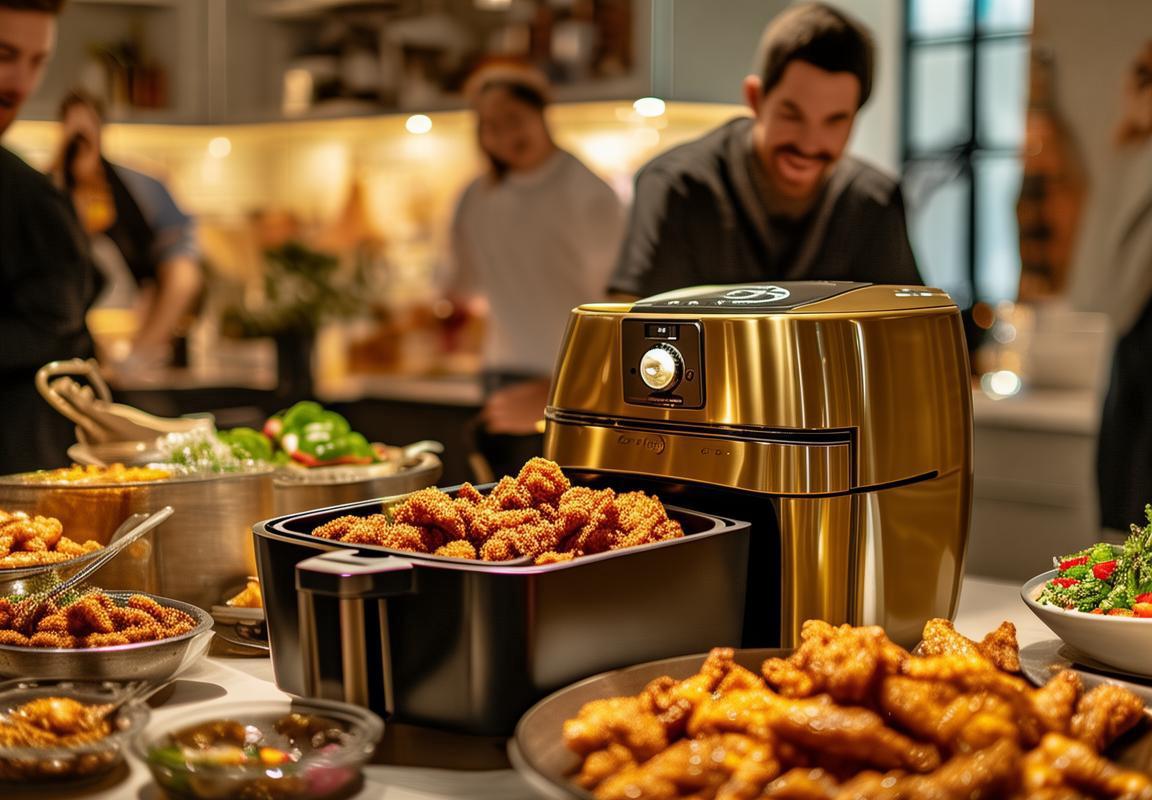
Understanding the Demand: What Drives Sales in Europe and the U.S
The surge in popularity of air fryers in the Western markets, particularly in Europe and the United States, is a testament to the evolving culinary landscape and consumer preferences. Understanding the factors that drive sales in these regions is crucial for suppliers looking to capitalize on this trend.
Health consciousness has become a pivotal factor in the rise of air fryers. With a growing number of consumers seeking healthier alternatives to traditional frying methods, air fryers offer a solution that allows for the preparation of crispy, delicious foods with significantly less oil. This shift towards healthier lifestyles has propelled the demand for air fryers, as they cater to the needs of those looking to reduce their fat intake without compromising on taste.
The convenience factor cannot be overlooked. Air fryers are compact, easy to use, and require minimal clean-up. This makes them a perfect addition to any kitchen, especially for busy households or individuals who prefer quick and effortless cooking methods. The convenience aspect has been a major draw for consumers in Europe and the U.S., where time is often a precious commodity.
The influence of celebrity chefs and cooking shows has also played a significant role in popularizing air fryers. With chefs like Giada De Laurentiis and Gordon Ramsay showcasing the versatility of air fryers on their programs, the public has been introduced to a wide range of recipes that can be made using this appliance. The endorsement of well-known personalities has helped demystify the air fryer and make it a more accessible option for home cooks.
The cost-effectiveness of air fryers is another driving force behind their sales. Compared to traditional ovens or deep fryers, air fryers are generally more affordable and require less energy to operate. This affordability has made them an attractive choice for budget-conscious consumers who are looking for a quality kitchen appliance without breaking the bank.
Cultural shifts have also contributed to the increased demand for air fryers. The popularity of international cuisines, such as Korean, Thai, and Vietnamese, has led to a greater interest in cooking these dishes at home. Air fryers are well-suited for these types of recipes, allowing for the authentic flavors without the need for excessive oil. This cultural crossover has expanded the market for air fryers, as consumers seek to bring the flavors of their favorite restaurants into their own kitchens.
The integration of technology into kitchen appliances has also played a role in the air fryer’s success. Many modern air fryers come with features like programmable settings, digital displays, and even Bluetooth connectivity for remote monitoring. These technological advancements have made air fryers not just a cooking tool but also a smart kitchen gadget, appealing to tech-savvy consumers who appreciate the latest innovations.
Moreover, the sustainability movement has influenced consumer choices, and air fryers align with this trend. By using less oil and reducing the need for preheating, these appliances are seen as more environmentally friendly. As consumers become more environmentally conscious, they are more likely to choose products that are not only healthy and convenient but also sustainable.
The rise of social media and online reviews has also had a significant impact on air fryer sales. With the ability to easily share recipes and cooking tips, consumers are more likely to try new products based on the experiences of others. Positive reviews and viral cooking videos have helped to spread awareness and generate buzz around air fryers, further driving sales.
Lastly, the versatility of air fryers is a key driver of demand. From crispy French fries to tender roasted vegetables, the appliance can handle a wide range of recipes. This adaptability means that air fryers are not just a one-trick pony; they can become a staple in a home kitchen, making them an appealing investment for consumers.
In conclusion, the demand for air fryers in Europe and the U.S. is driven by a combination of health consciousness, convenience, celebrity endorsements, affordability, cultural shifts, technological advancements, sustainability concerns, social media influence, and versatility. Suppliers looking to tap into this market must understand these factors to effectively market and sell their products.

Why Amazon FBA is the Preferred Choice for Air Fryer Suppliers
In the competitive landscape of the kitchen appliance market, Amazon FBA (Fulfillment by Amazon) has emerged as the go-to choice for many air fryer suppliers. This preference is driven by a multitude of factors that not only streamline the supply chain but also enhance the overall customer experience. Let’s delve into why Amazon FBA stands out as the preferred choice for air fryer suppliers.
The first and most significant advantage is the sheer scale of Amazon’s platform. As one of the largest e-commerce platforms globally, Amazon boasts a vast customer base that is always on the lookout for the latest kitchen gadgets. For air fryer suppliers, this means access to a market that is both diverse and expansive, allowing them to reach potential buyers with minimal effort.
Another key factor is the trust that consumers place in Amazon. The brand has built a reputation for reliability and customer satisfaction, which is crucial in the kitchen appliance sector. When a customer purchases an air fryer through Amazon FBA, they are essentially buying into a system that promises fast shipping, easy returns, and a seamless shopping experience. This trust translates into a more comfortable buying decision for customers, which in turn benefits the suppliers.
The logistics aspect of the supply chain is another area where Amazon FBA excels. By handling the storage, packing, and shipping of products, Amazon relieves suppliers of the burden of managing these operations. This not only reduces costs but also minimizes the risk of stockouts or shipping errors. For air fryer suppliers, this means they can focus on what they do best—manufacturing high-quality appliances—while leaving the logistics to the experts.
One cannot ignore the role of Amazon’s sophisticated algorithms in driving sales. The platform’s recommendation engine is highly effective at suggesting products to customers based on their browsing and purchase history. For air fryer suppliers, this means that their products are more likely to be recommended to a wider audience, increasing the chances of a sale. Additionally, Amazon’s search engine optimization (SEO) practices ensure that products that are listed on the platform are easily discoverable by potential buyers.
Customer service is a cornerstone of Amazon’s business model, and this is no different for air fryer suppliers. When a customer has an issue with their purchase, they can reach out to Amazon’s customer service team, which is trained to handle a wide range of inquiries. This support system not only resolves customer concerns but also protects the reputation of the supplier. In the event of a product defect or customer dissatisfaction, the supplier can rely on Amazon’s service to mitigate any negative impacts.
For air fryer suppliers looking to expand into international markets, Amazon FBA offers a gateway to new audiences without the need for setting up local infrastructure. By using Amazon’s fulfillment centers around the world, suppliers can ship their products to customers in different countries with ease. This global reach is particularly valuable for suppliers who want to tap into the growing demand for air fryers in regions like Europe and the United States.
Moreover, the data and analytics provided by Amazon FBA are invaluable to suppliers. The platform offers insights into customer behavior, sales trends, and inventory levels, which can inform strategic decisions. For example, suppliers can use this data to understand which features are most popular among customers, allowing them to tailor their product offerings accordingly.
In the realm of marketing, Amazon FBA also offers a competitive edge. Suppliers can leverage Amazon’s advertising tools, such as sponsored products and Amazon’s own private label program, to increase visibility and sales. This marketing support is particularly beneficial for new or small-scale suppliers who may not have the budget for extensive marketing campaigns.
Lastly, the flexibility of the Amazon FBA model is a major draw for air fryer suppliers. They can start with a small inventory and scale up as sales grow, without the need for a large upfront investment in storage or shipping facilities. This scalability is crucial for suppliers who are looking to test the market or introduce new products.
In conclusion, the preference for Amazon FBA among air fryer suppliers is well-founded. The combination of a large customer base, established trust, efficient logistics, advanced marketing tools, and robust customer service makes Amazon FBA an attractive option for suppliers looking to thrive in the competitive kitchen appliance market.

Key Benefits of Partnering with an Amazon FBA Supplier
- The allure of Amazon FBA for air fryer suppliers lies in the platform’s vast reach, offering access to millions of customers worldwide.
- One of the standout benefits is the seamless integration of Amazon’s fulfillment services, which means suppliers can focus on production and product development.
- The brand recognition and trust that Amazon has built over the years can significantly boost the credibility of any air fryer supplier, making it easier to attract buyers.
- With FBA, suppliers can leverage Amazon’s advanced logistics and inventory management systems, ensuring that products are always in stock and ready for purchase.
- The scalability of the Amazon FBA model is another draw. Suppliers can start small and gradually increase their inventory as demand grows, without the need for a massive upfront investment.
- Amazon’s customer service is top-notch, and when a supplier partners with FBA, they benefit from this by having Amazon handle customer inquiries and returns, reducing the supplier’s workload.
- The extensive marketing resources available through Amazon can be utilized by air fryer suppliers to boost their product visibility and sales, from product listings to search engine optimization.
- FBA also offers detailed analytics and sales reports, allowing suppliers to make informed decisions about their product offerings and marketing strategies.
- By joining the Amazon FBA program, suppliers can tap into Amazon’s Prime membership program, which often leads to increased sales due to the perceived value and convenience of Prime shipping.
- The Amazon FBA program includes robust security measures that protect suppliers from the risks associated with shipping and handling, including product damage and lost packages.
- The networking opportunities within the Amazon FBA community are invaluable, as suppliers can learn from and collaborate with other successful sellers.
- Lastly, the flexibility of the FBA model means that suppliers can experiment with new products and variations without the constraints of managing their own warehouse or logistics operations.
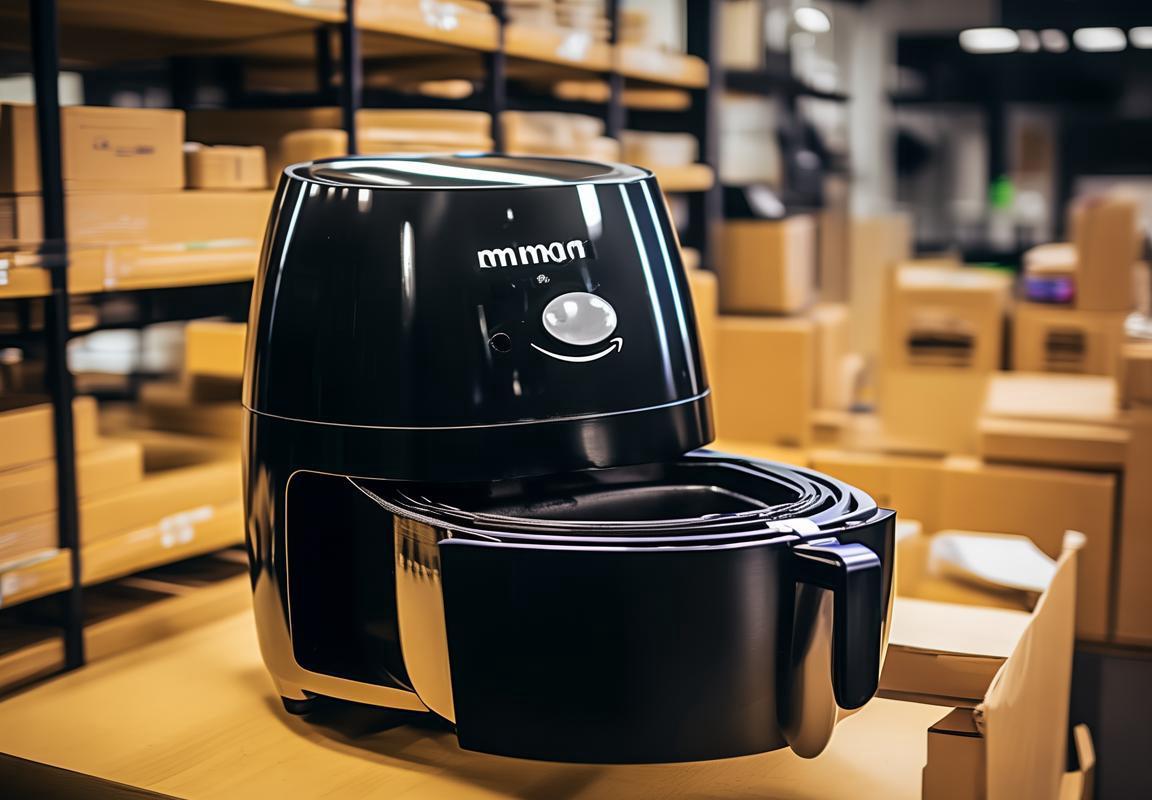
The Role of Quality and Innovation in Air Fryer Market Success
In the competitive landscape of the air fryer market, the intersection of quality and innovation stands as a cornerstone for success. Here’s a deeper look into how these two factors play a pivotal role in the industry’s growth.
The air fryer market is characterized by rapid advancements, with consumers seeking appliances that not only meet their culinary needs but also exceed their expectations. Quality air fryers are built to last, offering durability that is a direct result of meticulous engineering and the use of high-grade materials.
Consumer preferences have shifted towards healthier cooking methods, and air fryers have emerged as a preferred choice. The quality of these appliances is crucial, as it directly impacts the cooking experience. A well-constructed air fryer ensures even heating and consistent results, which is essential for both home cooks and professional chefs.
Innovation, on the other hand, drives the market forward by introducing new features and technologies. From adjustable temperature settings to smart technology that allows for remote control, innovative air fryers offer users greater control over their cooking process. These advancements not only enhance the cooking experience but also open up new possibilities for recipes and cooking techniques.
The integration of smart technology in air fryers has transformed the appliance from a simple kitchen gadget to a multifunctional tool. Users can now enjoy the convenience of pre-programmed settings for various types of food, reducing the guesswork and time involved in cooking. This level of innovation is not just a novelty; it’s a necessity in a market where customers are increasingly looking for convenience and efficiency.
Moreover, quality and innovation go hand in hand with sustainability. Manufacturers that prioritize quality are more likely to invest in eco-friendly materials and manufacturing processes. This not only benefits the environment but also appeals to a growing segment of consumers who are conscious of their carbon footprint.
In the realm of quality, attention to detail is paramount. For instance, the quality of the heating element can significantly impact the performance of an air fryer. High-quality heating elements provide even heat distribution, which is essential for achieving the desired texture and flavor in cooked foods. Conversely, cheaper models might suffer from uneven heating, leading to overcooked or undercooked results.
Innovation also extends to the design of air fryers. Modern appliances often come with sleek, space-saving designs that make them a perfect fit for any kitchen. The integration of digital displays and intuitive interfaces has made air fryers more user-friendly than ever before. These design elements not only enhance the aesthetic appeal of the product but also contribute to its overall quality.
Another aspect of innovation is the customization that air fryers offer. Many models now come with accessories that allow users to cook a wider variety of foods. These accessories can range from basket inserts to dehydrator trays, providing users with the flexibility to experiment with different cooking methods.
In the air fryer market, quality and innovation are not just buzzwords; they are the lifeblood of successful products. Brands that invest in both are able to stand out in a crowded marketplace, capturing the attention of consumers who are looking for the best combination of performance, convenience, and value.
The rise of health-conscious consumers has also played a significant role in the success of air fryers. As people become more aware of the health risks associated with traditional deep-frying, they are turning to air fryers as a healthier alternative. The quality of these appliances is critical in delivering on this promise, as a poorly designed air fryer may not live up to its health claims.
Innovation in the air fryer market is not just about creating new products; it’s about solving real-world problems. For example, the development of air fryers with programmable timers and alerts ensures that users never overcook their food. This level of attention to detail and innovation is what sets apart market leaders from the competition.
In conclusion, the air fryer market’s success is a testament to the power of quality and innovation. By focusing on these two elements, manufacturers can create products that not only meet but exceed consumer expectations. As the market continues to evolve, it’s clear that those who prioritize quality and innovation will be the ones leading the charge.
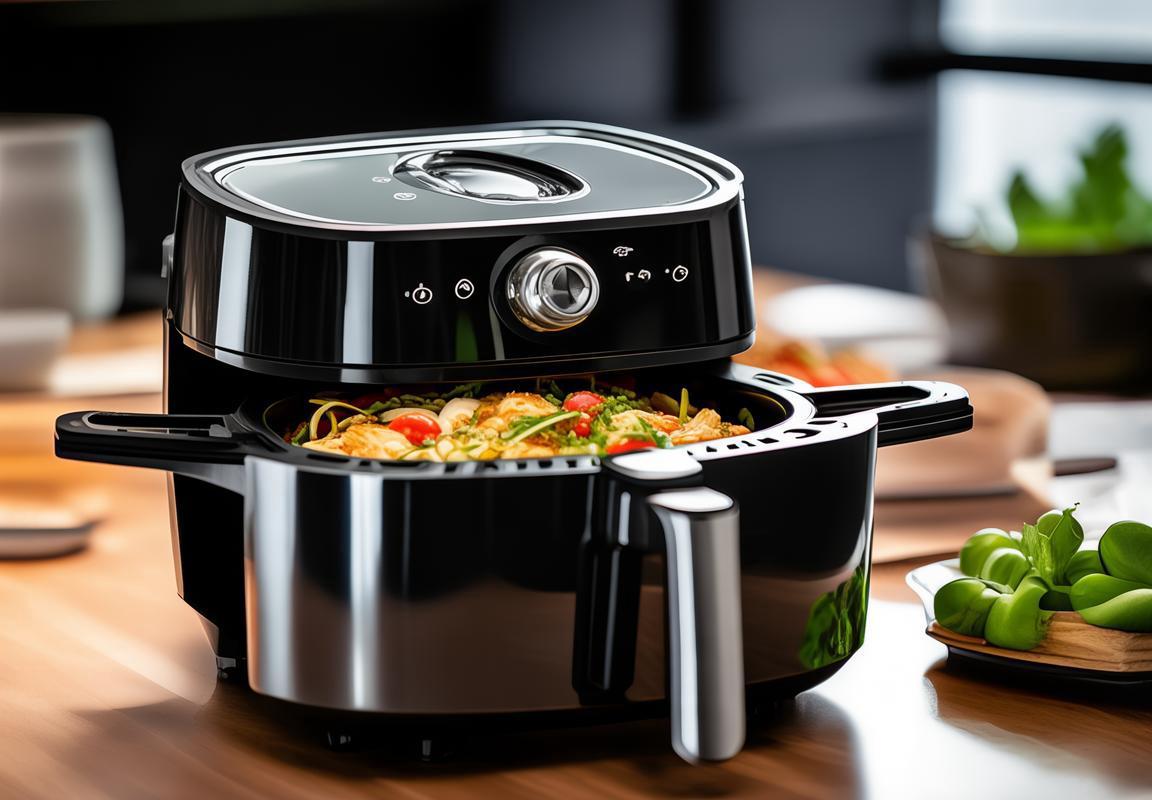
Navigating Regulations and Safety Standards
In the world of air fryer manufacturing, navigating regulations and safety standards is akin to steering through a complex maze. Ensuring that your products meet these criteria is not just about compliance; it’s about building trust with consumers and safeguarding your brand’s reputation. Here’s a delve into the nuances of this crucial aspect of the industry:
Understanding the Complexity of RegulationsRegulatory landscapes can vary drastically from one country to another, and even within regions. For instance, the United States has the Food and Drug Administration (FDA), which regulates food safety, while Europe has the European Union’s General Product Safety Directive (GPSD). Both regions have strict guidelines for electrical appliances like air fryers, encompassing material safety, energy efficiency, and electromagnetic compatibility.
Material SafetyThe materials used in air fryers, from plastic casings to metal components, must be free from harmful substances. Regulations like the Restriction of Hazardous Substances (RoHS) in Europe and the Consumer Product Safety Improvement Act (CPSIA) in the U.S. dictate the levels of lead, cadmium, and other toxic elements that are permissible in consumer products. Suppliers must meticulously test and certify their components to ensure they adhere to these standards.
Energy EfficiencyEnergy consumption is a significant concern for consumers and governments alike. Energy-related regulations are in place to encourage manufacturers to produce appliances that are more environmentally friendly and cost-effective. The U.S. Energy Star program and the European Union’s Energy-related Products (ErP) directive are examples of initiatives that set energy efficiency standards for air fryers and other electronics.
Electromagnetic Compatibility (EMC)Air fryers emit electromagnetic signals that must not interfere with other electronic devices or networks. Ensuring electromagnetic compatibility is critical, as non-compliance can lead to devices that malfunction, cause interference, or even pose a safety hazard. Testing for EMC involves rigorous simulations and measurements to confirm that the air fryer operates within acceptable emission limits.
Certification and TestingTo navigate these regulations, air fryer suppliers must engage in thorough testing and certification processes. This involves sending samples to accredited laboratories for various types of testing, such as flammability, shock, and vibration tests. Certification bodies like Underwriters Laboratories (UL) and Intertek provide the necessary endorsements that manufacturers need to label their products as compliant.
Compliance with International StandardsFor suppliers looking to export their air fryers globally, understanding and adhering to international standards such as ISO 9001 for quality management and ISO 14001 for environmental management is essential. These standards help ensure that products are consistently safe and of high quality across different markets.
Consumer SafetySafety is paramount in the air fryer market. Products must be designed to prevent electrical shocks, overheating, and fire hazards. This includes features like automatic shut-offs, non-slip bases, and heat-resistant handles. Compliance with safety standards is not just about avoiding legal repercussions but also about protecting the end-user.
Risk ManagementSuppliers must be adept at identifying potential risks that could lead to non-compliance. This includes keeping abreast of updates to regulations, managing supply chain issues that could affect material quality, and maintaining effective quality control processes.
The Impact on Product DevelopmentNavigating regulations often influences the design and development process. Suppliers must find a balance between meeting safety standards and creating innovative, user-friendly products. This can sometimes mean compromising on design features or materials that could compromise safety or compliance.
Innovation and RegulationDespite the stringent regulations, innovation is a driving force in the air fryer market. Suppliers often introduce new features and technologies that not only comply with safety standards but also enhance user experience. This includes advancements in cooking technology, user interface design, and energy efficiency.
Consumer TrustUltimately, the careful navigation of regulations and safety standards is about building and maintaining consumer trust. When a brand demonstrates its commitment to safety, consumers are more likely to purchase the product, confident in its reliability and quality.
In conclusion, the path to success in the air fryer market is paved with compliance. It requires suppliers to stay informed about international and regional regulations, invest in quality assurance, and innovate while adhering to safety protocols. This holistic approach ensures that air fryers reach the market not just as products, but as trust symbols, safe and reliable in the eyes of consumers.

Case Studies: Successful Air Fryer Suppliers on Amazon FBA
In the competitive world of online retail, several air fryer suppliers have managed to carve out a niche for themselves on Amazon FBA (Fulfillment by Amazon). Let’s delve into some case studies of these successful suppliers and what they’ve done right.
1. Focus on Unique DesignsOne supplier that has seen remarkable success is known for its innovative air fryer designs. By offering a variety of colors and unique shapes, they’ve managed to attract customers who are looking for something different from the standard models. Their sleek, modern designs have become a talking point, leading to increased brand recognition and sales.
2. Quality Components and EndorsementsAnother supplier has made a name for themselves by using high-quality components in their air fryers. These components not only ensure longer durability but also contribute to the efficiency and performance of the product. The supplier has also secured endorsements from well-known chefs and nutritionists, which has added credibility and trust among potential buyers.
3. Strategic Marketing and BrandingA third supplier stands out due to its strategic marketing approach. They’ve leveraged social media influencers and targeted advertising campaigns to reach a broader audience. By associating their brand with healthy living and cooking trends, they’ve been able to tap into a market segment that values both convenience and health.
4. Exceptional Customer ServiceCustomer satisfaction is a cornerstone for the success of an Amazon FBA supplier. One supplier has excelled in this area by offering exceptional customer service. They provide prompt responses to inquiries, offer detailed product information, and have a straightforward return policy. This level of service has led to high customer retention rates and positive reviews, which in turn drive more sales.
5. Continuous Product ImprovementA key factor in the success of one air fryer supplier is their commitment to continuous product improvement. They regularly gather feedback from customers and use this information to make iterative changes to their product line. This approach has allowed them to stay ahead of the curve in terms of features and functionality, keeping them competitive in a rapidly evolving market.
6. Strong Supply Chain ManagementEfficient supply chain management is crucial for ensuring that products are consistently available on Amazon. A supplier that has thrived on the platform has managed to maintain a robust supply chain. They’ve established relationships with reliable manufacturers and have implemented inventory management systems that prevent stockouts and delays.
7. Utilizing Amazon’s Tools and ResourcesSuccessful Amazon FBA suppliers know how to leverage the tools and resources provided by Amazon. They use Amazon’s analytics to understand customer behavior and preferences, and they optimize their listings with high-quality images, detailed descriptions, and compelling product titles. This strategic use of Amazon’s platform has helped them increase visibility and sales.
8. Collaborating with Amazon PrimeBy aligning with Amazon Prime, a supplier has been able to tap into a vast customer base that values fast and free shipping. Being part of the Prime program has not only increased their sales but has also given them a competitive edge over suppliers who do not offer Prime shipping.
9. Diversifying Product LineA supplier that has achieved success on Amazon FBA has diversified their product line to cater to different customer needs. They offer a range of air fryers, from budget-friendly models to premium, high-capacity units. This diversification has allowed them to capture a wider market share and appeal to a broader demographic.
10. Building a Strong Online PresenceLastly, a supplier’s strong online presence has been instrumental in their success. They actively engage with customers through social media, offering tips and tricks for using their air fryers, and providing engaging content that keeps their brand top of mind. This consistent online engagement has helped build a loyal customer base.
These case studies highlight the various strategies that air fryer suppliers have employed to achieve success on Amazon FBA. From focusing on design and quality to providing excellent customer service and leveraging Amazon’s resources, these suppliers have demonstrated that a combination of factors can lead to a thriving online business.
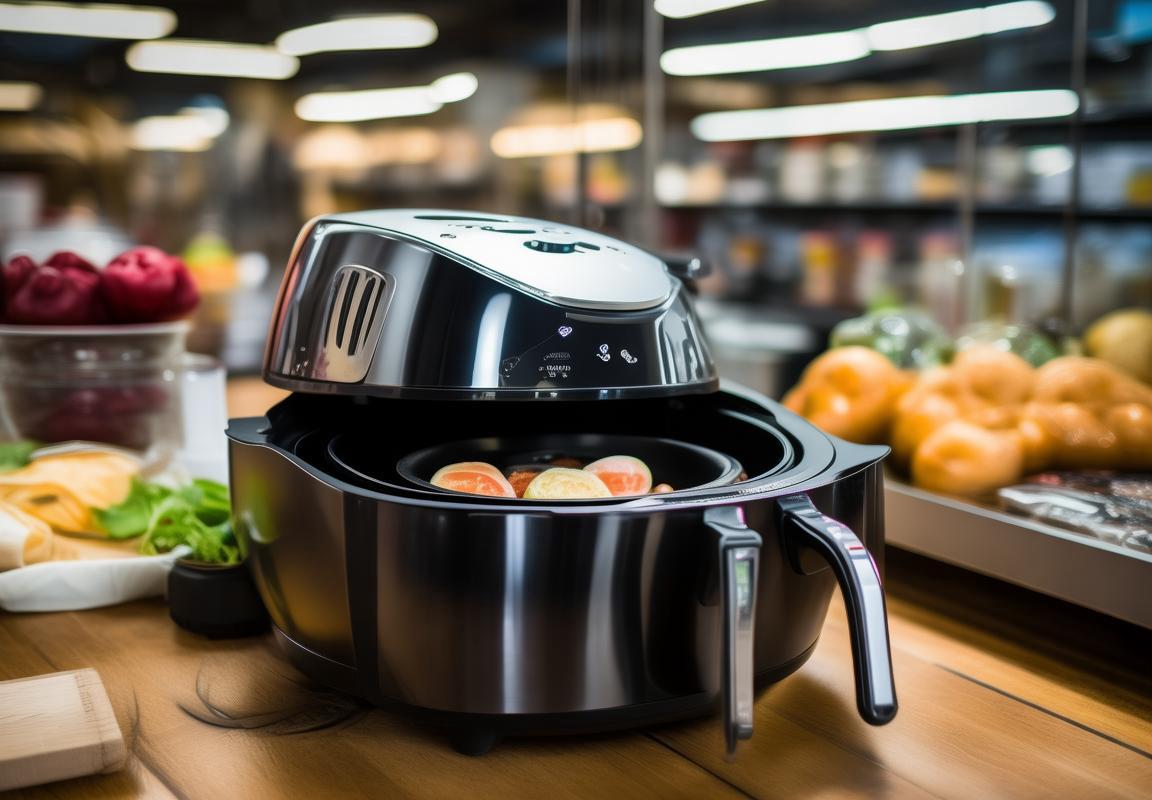
Challenges and Opportunities in the Air Fryer Supply Chain
The air fryer market has seen a surge in demand, with consumers increasingly seeking healthier cooking alternatives. Navigating the supply chain in this dynamic industry comes with its own set of challenges and opportunities. From sourcing high-quality components to managing logistics and ensuring product compliance, the journey can be intricate. Here’s a closer look at the complexities and possibilities within the air fryer supply chain.
Supply Chain Complexity
The air fryer supply chain is a intricate web of relationships and processes. It starts with raw material suppliers, who must provide components like heating elements, fans, and baskets. Each of these parts must meet specific quality and safety standards. The complexity grows as manufacturers assemble these components, ensuring they work together seamlessly.
Quality Control
Maintaining quality throughout the supply chain is paramount. Suppliers must adhere to rigorous quality control measures to ensure that every air fryer that leaves the factory meets the brand’s standards. This includes regular inspections, certifications, and adherence to international safety regulations. The margin for error is slim, and any defects can lead to costly recalls or damage to the brand’s reputation.
Logistics and Distribution
The logistics aspect of the supply chain is equally critical. Air fryers, like many electronic devices, are sensitive to handling and transportation conditions. Ensuring that they are packaged securely and shipped under the right conditions is essential to prevent damage. Additionally, the distribution network must be efficient to meet the varying demands of different markets around the world.
Global Sourcing
The air fryer supply chain often involves global sourcing, with components coming from various countries. This can present opportunities for cost savings and access to specialized parts, but it also introduces challenges. Language barriers, cultural differences, and varying regulatory requirements must be navigated carefully to ensure smooth operations.
E-commerce Integration
The rise of e-commerce platforms like Amazon has changed the landscape of the air fryer supply chain. Suppliers now need to consider how their products will fare in the online marketplace, with its unique customer expectations and return policies. This requires a flexible supply chain that can adapt to the fast-paced nature of online sales.
Environmental Concerns
As sustainability becomes a growing concern, the air fryer supply chain must also address environmental issues. This includes sourcing materials that are environmentally friendly, reducing packaging waste, and minimizing the carbon footprint of transportation. Suppliers that can demonstrate a commitment to sustainability may have a competitive edge.
Market Trends and Consumer Behavior
Understanding market trends and consumer behavior is key to navigating the air fryer supply chain successfully. For instance, as consumers become more health-conscious, there may be a shift towards air fryers with additional features like programmable settings or smart technology. Suppliers must be able to anticipate these changes and adjust their offerings accordingly.
Regulatory Compliance
Compliance with regulations is a non-negotiable aspect of the air fryer supply chain. Different countries have varying standards for electrical appliances, and suppliers must ensure that their products meet all applicable safety and labeling requirements. This can involve working closely with regulatory bodies and staying up-to-date with the latest changes in legislation.
Supply Chain Resilience
Lastly, the air fryer supply chain must be resilient to unforeseen disruptions. This could be due to natural disasters, political instability, or global pandemics. Suppliers need to have contingency plans in place to minimize the impact of these events and ensure that product availability is not compromised.
In conclusion, the air fryer supply chain is a multifaceted endeavor that requires careful planning, strategic sourcing, and a deep understanding of the market. By embracing the challenges and leveraging the opportunities, suppliers can not only meet the demand for air fryers but also contribute to the long-term success of their brands.

Future Trends and Predictions for the Air Fryer Industry
The air fryer industry has seen a surge in popularity, and with this growth comes a wave of innovation and challenges. As suppliers navigate the supply chain, they must be aware of the evolving trends and predictions that will shape the future of this market. Here’s a closer look at what’s ahead:
In recent years, air fryers have transitioned from a niche product to a staple in many kitchens. This shift has been driven by consumer demand for healthier cooking options that mimic the taste and texture of fried foods without the guilt. As this trend continues, suppliers need to stay attuned to the latest advancements in technology and consumer preferences.
One significant trend is the integration of smart technology into air fryers. Smart appliances are becoming increasingly popular, and air fryers are no exception. Suppliers that can offer models with features like remote control, recipe integration, and smart home connectivity will likely have a competitive edge. The ability to connect with the consumer’s lifestyle is crucial, as it allows for a more personalized and convenient cooking experience.
Sustainability is another critical factor shaping the future of the air fryer industry. As consumers become more environmentally conscious, there’s a growing preference for products that are eco-friendly. This includes the use of recycled materials, energy-efficient designs, and a focus on the product’s lifecycle. Suppliers that can demonstrate a commitment to sustainability may find a loyal customer base.
Health and wellness remain at the forefront of consumer concerns. Air fryers have gained popularity as a healthier alternative to traditional frying methods, but the market is not without its challenges. Suppliers must continue to innovate by offering air fryers that not only reduce oil usage but also enhance flavor and cooking performance. This might involve the development of new cooking technologies or the inclusion of healthier oil options.
The rise of the digital kitchen is also influencing the air fryer market. With the increasing use of mobile devices and online platforms, suppliers have the opportunity to leverage digital marketing and e-commerce to reach a wider audience. However, this also means that they must stay ahead of the curve in terms of product design and online presence. A seamless online shopping experience, combined with excellent customer service, can be a game-changer for suppliers.
Customization is another trend that’s gaining traction. Consumers are looking for products that cater to their specific needs, whether that’s a particular size, power output, or additional features. Suppliers that can offer a range of options or even customizable air fryers may attract a more diverse customer base.
The global nature of the air fryer market presents both challenges and opportunities. Suppliers must navigate international regulations and standards, which can vary significantly from one region to another. This includes safety certifications, labeling requirements, and even cultural preferences. Those who can adapt to these diverse markets will be well-positioned for growth.
As the industry continues to evolve, the role of data analytics cannot be overstated. Suppliers who can collect and analyze consumer data will be better equipped to anticipate market trends and tailor their products accordingly. This data-driven approach can lead to more targeted marketing campaigns and improved customer satisfaction.
Innovation in materials and design is also a key factor. Suppliers that invest in research and development to create more durable, energy-efficient, and aesthetically pleasing air fryers will likely outpace the competition. The ability to innovate can lead to longer product lifecycles and increased customer loyalty.
Finally, the rise of health-conscious fast-casual dining is creating a new opportunity for air fryer suppliers. As restaurants and cafes look to offer healthier options, they may turn to air fryers to reduce oil usage and provide a healthier alternative to traditional frying methods. This opens up a new market segment for suppliers to explore.
In conclusion, the air fryer industry is ripe with opportunities for suppliers who are willing to innovate, adapt, and stay ahead of the curve. By focusing on smart technology, sustainability, health and wellness, customization, global market adaptation, data analytics, material innovation, and the fast-casual dining trend, suppliers can position themselves for long-term success in the ever-growing air fryer market.
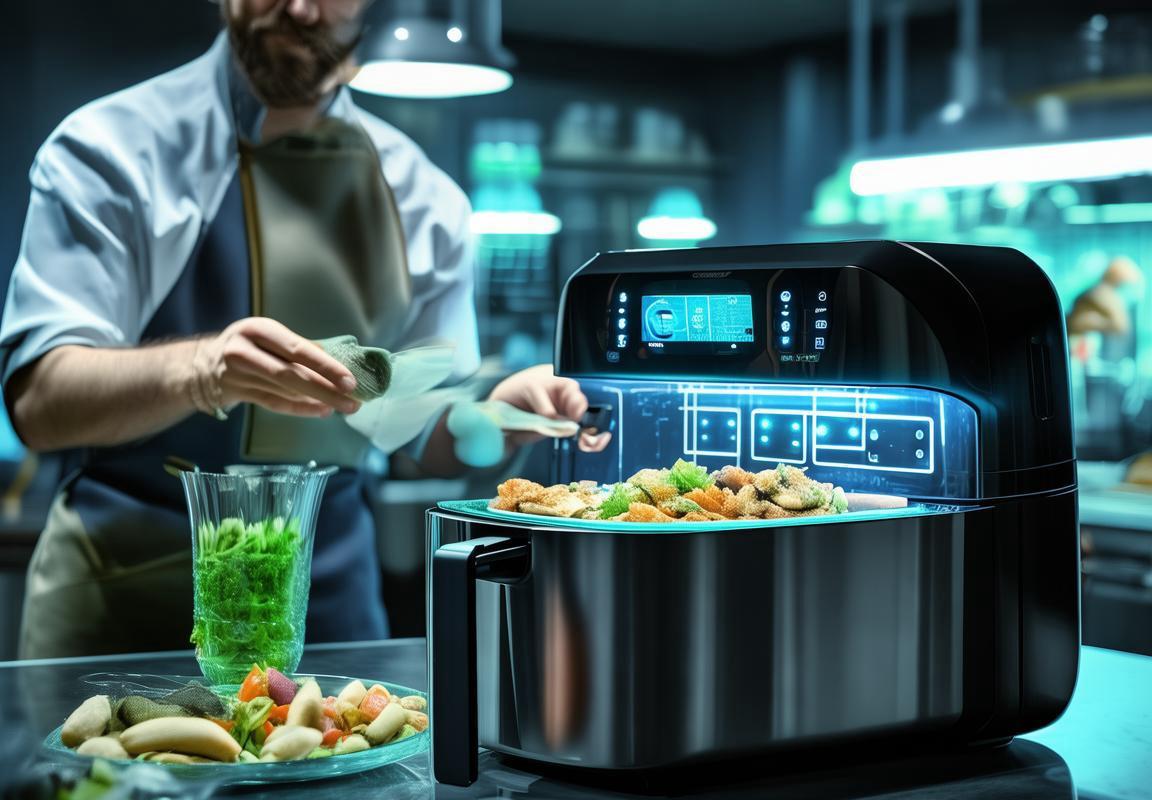
Conclusion: How to Find the Right Amazon FBA Supplier for Air Fryers
Choosing the right Amazon FBA supplier for air fryers is a pivotal decision for any brand looking to enter or expand in the market. The path to finding a reliable partner can be nuanced, requiring careful consideration of several factors. Here’s how to navigate this process effectively:
-
Assess Your Brand’s Needs: Before delving into the supplier search, it’s crucial to have a clear understanding of what your brand stands for and what you expect from a supplier. This includes your product specifications, desired quality standards, and the scale of operations you’re aiming for.
-
Research Potential Suppliers: Start by researching potential suppliers. Look for those with experience in the kitchen appliance industry, specifically air fryers. Check their online presence, reviews, and ratings on Amazon to gauge customer satisfaction.
-
Evaluate Quality Control: Quality is paramount in the air fryer market. Ensure that the supplier has robust quality control measures in place. This might involve inspecting their manufacturing process, material sourcing, and adherence to safety standards.
-
Consider Production Capacity: Your supplier should be able to meet your production demands. Whether you’re looking for small-batch runs or large-scale orders, their capacity should align with your business goals.
-
Assess Their Distribution Network: A reliable supplier will have a well-established distribution network, especially with Amazon FBA. This network should ensure timely shipping and efficient handling of inventory.
-
Understand Their Pricing Structure: Pricing can vary significantly among suppliers. It’s important to understand their pricing structure and how it aligns with your budget. Be wary of suppliers who offer unusually low prices, as this might compromise on quality.
-
Check for Compliance and Certifications: The air fryer market is heavily regulated, especially regarding safety and energy efficiency. Ensure your supplier complies with all relevant standards and has the necessary certifications, such as UL or CE.
-
Communicate Openly: Clear and open communication is key to a successful partnership. Make sure you can easily communicate with your supplier regarding product updates, inventory levels, and any issues that may arise.
-
Visit the Factory: If possible, visit the supplier’s factory to see the production process firsthand. This can provide insight into their operations and give you confidence in their capabilities.
-
Review the Contract Details: Before finalizing a supplier, carefully review the contract terms. Pay attention to aspects such as payment schedules, minimum order quantities, and terms for returns or replacements.
-
Seek Referrals and Testimonials: Reach out to other businesses that have worked with the supplier. Their experiences can provide valuable insights into the supplier’s reliability and service quality.
-
Be Prepared for Negotiations: Suppliers may have room to negotiate on certain terms, such as pricing or delivery schedules. Be prepared to discuss and possibly negotiate these points to secure the best deal for your brand.
-
Monitor Performance: Once you’ve found a supplier, continually monitor their performance. This includes checking product quality, delivery times, and customer service responsiveness.
-
Build a Long-Term Relationship: Aim to build a long-term relationship with your supplier. This can lead to better pricing, improved product customization, and a more streamlined supply chain.
-
Stay Informed About Market Trends: Keep up-to-date with the latest trends in the air fryer market. This knowledge can help you anticipate future needs and work closely with your supplier to stay competitive.
By carefully considering these points, you’ll be well on your way to finding the right Amazon FBA supplier for air fryers. Remember, the right supplier can make or break your brand’s success in this dynamic market.